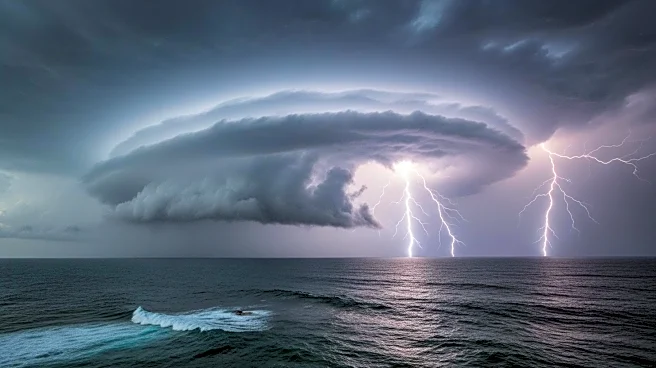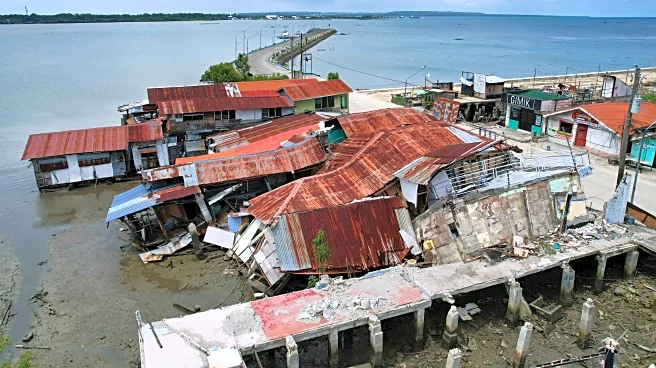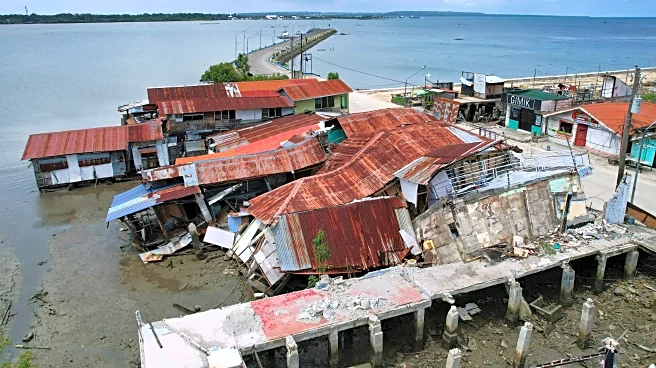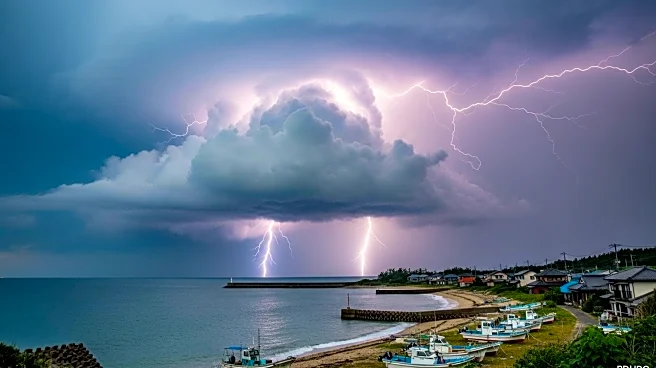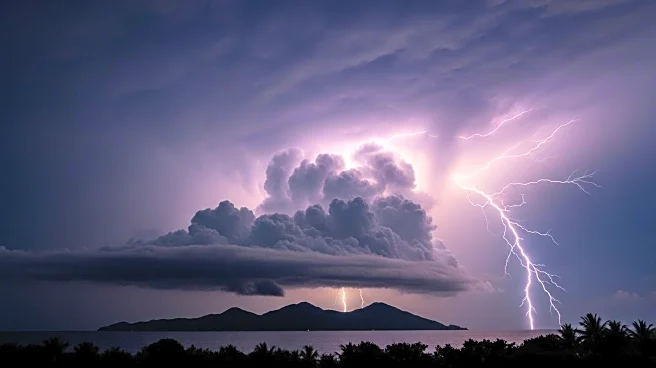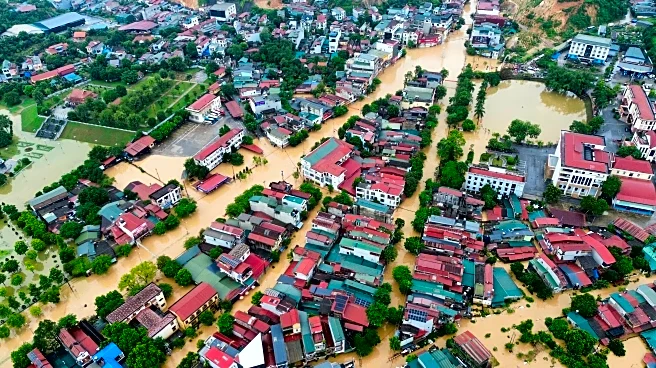What's Happening?
Typhoon Matmo has intensified as it made landfall in the northern Philippines, bringing heavy rains and strong winds. The storm, locally known as Paolo, is affecting the region with maximum sustained winds of 130 kilometers per hour. The national weather agency, Pagasa, has issued warnings of severe flooding and landslides, particularly in the provinces of Isabela, Aurora, and Quirino. In response to the typhoon, government work and schools have been suspended in the affected areas, and more than a dozen domestic flights have been canceled. The typhoon is expected to move into the South China Sea, where it may strengthen further before making a second landfall in southern China's Leizhou peninsula.
Why It's Important?
The intensification of Typhoon Matmo poses significant risks to the Philippines, a country already vulnerable to natural disasters. The heavy rainfall and potential for severe flooding and landslides threaten the safety and livelihoods of residents in the affected areas. The disruption of government services and transportation highlights the immediate impact on daily life and the economy. As the typhoon moves towards China, it could affect agricultural regions, potentially damaging crops and impacting food supply chains. The situation underscores the ongoing challenges faced by countries in the region due to frequent and severe weather events.
What's Next?
As Typhoon Matmo progresses, authorities in both the Philippines and China are likely to continue monitoring the storm's path and intensity. Emergency response measures may be heightened to mitigate the impact on affected communities. In China, preparations may include safeguarding agricultural areas and infrastructure to minimize potential damage. The international community may also offer support and aid to assist in recovery efforts, particularly if the storm causes significant damage.
Beyond the Headlines
The recurring nature of such storms in the region raises questions about climate resilience and the need for improved infrastructure and disaster preparedness. The impact of Typhoon Matmo could prompt discussions on enhancing early warning systems and investing in sustainable development to better withstand future natural disasters.

